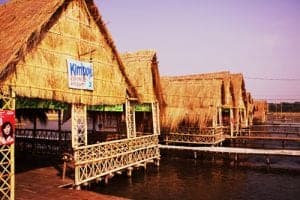
13 Facts About Siding That Will Impress Your Friends
So check out the facts and see just why siding is so impressive. Not only was it developed over the decades of development, it’s still getting improvements all the time. Siding in today’s world could last you a lifetime if you pick the right one. Check out the facts to see just what is the best siding for you. You might learn something fascinating along the way, hopefully you’ll be entertained too.
-

Thatch Home
Thatch is an ancient and very widespread building material used on roofs and walls. Thatch siding was made with dry vegetation such as long straw, water reeds, or combed wheat reed. The materials are overlapped and weaved in patterns designed to deflect and direct water.
- Wood shingles or irregular cedar “shake” siding was used in early New England construction, and was revived in Shingle Style and Queen Anne style architecture in the late 19th century.
- Wood siding in overlapping horizontal rows or “courses” is called clapboard, weatherboard (British English), or bevel siding which is made with beveled boards. Wood siding can also be made of naturally rot-resistant woods such as redwood or cedar. Conservation Construction in fact does sell Cedar Ridge Siding which is exclusive to our company.
- According to the U.S. Census Bureau about 33 percent of the new single-family homes constructed were clad in vinyl siding, making it the number one exterior siding choice.
- Aluminum siding with a baked-on color finish was introduced in 1947 by Jerome Kaufman. He learned the process by watching how the exteriors of planes were painted during World War II. Kaufman and a group of contemporaries formed Alside Siding, which became one of the largest producers of aluminum siding in the country.
- The mid-1980s brought another entrant to the exterior siding market: fiber cement. James Hardie Inc., an Australian company, developed the product that quickly gained a reputation for its realistic wood-like appearance and long-term durability. While many other companies now produce the material, Hardie is still identified so strongly with it that many contractors refer to all fiber cement products as “Hardieboard.” We too sell “James Hardie” siding at Conservation Construction.
- Some of the people coming to America were from England (where ship building had been around for centuries). Ship builders were very good at using planks of wood nailed to a frame to make strong ships. So they adapted the ship building techniques to home building. They used boards to make the house frames and then nailed long planks of wood to the frames. It looked like the side of the old wooden sailing ships. This became known as the ship-lap technique. And the nailing of long horizontal boards on houses became known as ‘ship lap’ siding or just ‘lap’ siding.
- Cedar siding has been the wood siding of choice for hundreds of years because of its natural beauty and low maintenance.
- Today’s vinyl siding looks just like real wood, doesn’t rot, termites won’t eat it, requires very little maintenance and upkeep, doesn’t need to be painted like real wood (we too sell this siding if you are interested in this).
- Warranties offered by vinyl manufacturers are generally lifelong and transferable.
- Decades ago, asbestos was widely used in home construction due to its low price and ability to fireproof the walls, attic and foundation of a house. Once asbestos became known as a health hazard, it was no longer put to use in new construction. However, there are older homes built before the 1970s in which asbestos was used in the siding, roofing and insulation materials
- Vinyl siding usually comes in thicknesses of .035 to .055 inches thick, and most quality brands have a thickness between .040 to .048 inches. Generally, the thicker, the better
- Most siding installation is rated for winds up to 110 mph
I hope that at least one of these facts impressed or astounded you in some way. If not, at least this prepared you for a Siding category on Jeopardy (if they’ve ever had such a thing). Remember that your house is just as important in history. As you get siding installed you are creating history for generations to come. You yourself get to decide which siding is best for your home and how you want it installed–either horizontally or vertically. The future of siding is still being developed today whether you choose today to get siding for your house or in a year from now you’ll have a technologically sound siding that’s right for your home. Visit our website today at conservationconstruction.com to find out which sidings work best for your home. We sell all different brands to fit each person’s individuals needs and tastes. We hope to hear from you soon. As always, thanks for reading the article and I hope to have you as a reader next time too.
“Believe that life is worth living and your belief will help create the fact.” William James
[contact-form-7 id=”4589″ title=”13 Friends About Siding That Will Impress Your Friends Contact”]